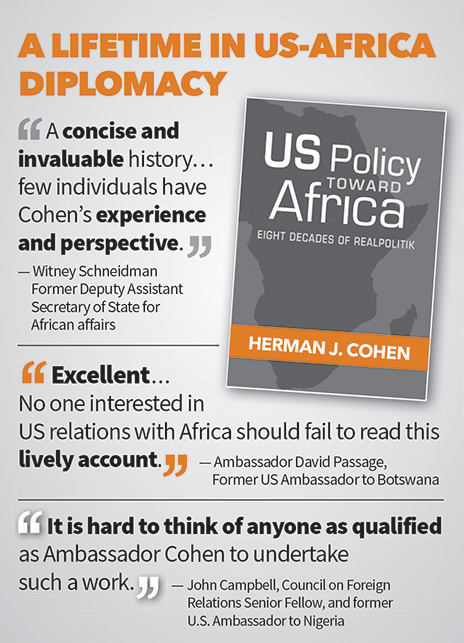Evaluation Reform at State: A Work in Progress
The 2015 EER reforms are the building blocks from which State intends to establish a fully modernized performance management system.
BY ALEX KARAGIANNIS
April is the cruelest month, T.S. Eliot wrote. For Foreign Service personnel who dread employee evaluation season, that poem fragment may have special relevance. In any organization, performance appraisals are a difficult subject; neither assessors nor employees relish them for obvious reasons. No matter how well done, an evaluation touches not just on performance but also on the person’s sense of self and identity. For the Foreign Service, with its up-or-out system, employee evaluation reports (EERs) are invariably sensitive. Raters, reviewers and employees all feel pressure. Little wonder that reactions are often defensive and emotionally charged, even when reviews are done well; when done poorly, anxiety levels shoot up.
Over the past decade, considerable work in the private sector by industrial psychologists and human capital experts has produced a revolution in designing performance appraisals that better meet both organizational and employee needs to fuel performance and engagement and also build future leadership capacity. Major firms such as Google, General Electric, Microsoft, Accenture, Cisco and others have revamped their systems to better identify and reward those who merit recognition and/or promotion and help all employees do better while cutting clutter, complexity and costs, including time often spent on misguided standards and ineffective and inefficient processes.
Mindful of the new developments in this area and the advantages they bring, the State Department made a series of initial reforms in 2015 as preliminary steps toward a more consequential future overhaul of the performance management system. USAID launched a separate reform in 2017-2018 [see here]. Though progress has been limited in the past couple of years, the 2015 EER reforms are building blocks from which State aims to establish, in the near to intermediate term, a state-of-the-art performance management system, including a user-oriented online interface. Director General Carol Perez has made reform a priority and hopes to achieve traction this year. Foreign Service Institute Director Daniel B. Smith is determined to achieve improved leadership and professional training, building on recent pathbreaking reforms.
Further collaboration between the Bureau of Global Talent Management (formerly the Bureau of Human Resources) and AFSA, speaking for the Foreign Service, holds promise to have a genuinely positive impact for employees. A new performance management system would significantly enhance employee confidence; better identify high performers and high-potential employees; cut processing time; deliver promotion results earlier; and have professional development baked into State’s corporate DNA.
The 2015 EER Changes
In developing the 2015 reforms, State conducted some 23 information sessions, received more than 2,000 comments from a SharePoint site, reviewed years of selection board reports and recommendations, and collaboratively negotiated with AFSA.
The relatively modest EER changes incorporated structural and cultural elements, as outlined below. Their objectives were to:
• Focus on past performance and project future capacity (“effectiveness areas”) rather than describing siloed proficiency in individual components (“the six competencies”).
• Focus on goals, outcomes and results rather than tasks, activities and output.
• Emphasize responsibilities (positive), not just requirements (defensive); and reduce the requirements section in the EER (which selection boards did not find especially useful) while retaining it in other documentation.
• Change “Area for Improvement” (a negative) to “Developmental Area” (neutral), recognizing that no matter how strong employees are, they have not achieved perfection and still have scope for growth and professional development.
• Add a new short section for the Senior FS for performance pay, to provide performance pay boards with additional information for that competition.
GTM anticipated it would take several years for employees to adjust and adapt to the new system, and several more years to fully embrace it.
• Move Meritorious Service Increases to a separate process, in keeping with the Foreign Service Act. (The MSI, commonly mischaracterized as Meritorious Step Increase, is designed to identify and reward exceptionally meritorious service; its language and placement in the FSA—separate from the discussion of promotion—suggests that the act’s drafters considered it as rare, not commonplace.)
This change was made in recognition that selection boards are charged with identifying for promotion (future capacity) and under-performance (failure to keep up with the cohort), not taking an overall look at past service and performance. A further aim was to introduce greater equity because some competing groups had too few members to qualify for MSIs under the existing precepts.
Last, the highest numbers of MSIs were being awarded to lower ranks—which had the greatest number of employees eligible for promotion, but where it is less likely that, with relatively limited experience, employees would truly have demonstrated especially meritorious service. By contrast, employees at the mid-ranks and FS-1s had comparatively few MSIs available. The lack of rigor and equity in awarding MSIs was jarring.
• Eliminate classwide reviews. These had required two steps to achieve one total promotion number for each cone (often with necessary adjustments in subsequent years if cones overshot or fell short of projected numbers). Further, they had not achieved their stated objectives for greater diversification and growth across all cones. The data showed that two cones received nearly 70 percent of promotions at the FS-1 and above levels, and some employees received counseling letters for not serving in cone (undercutting the very premise of classwide competition). Also, because classwide reviews came first and were followed by conal reviews, the board seasons slid into October, deep into bid season, before promotion results came out.
• Tighten the narrative boxes to accentuate brevity and clarity; and focus on challenges and significant achievements that demonstrate readiness for greater responsibilities, not merely narrative exposition of lists of activities.
• Introduce a new mechanism to reduce the number and frequency that employees, raters and reviewers had to touch the EER for edits. (Owing to the complexity and limitations of PeopleSoft software, which does not work with Microsoft Word, this shift could not address all employee concerns and administrator needs.)
Prior to the rollout, the Bureau of Global Talent Management conducted numerous information sessions, both in the department and at major overseas posts, and set up an online resource bank that included helpful hints and guides (e.g., on distinguishing between performance and potential, and on avoiding loaded and coded language and implicit or unconscious bias). GTM anticipated it would take several years for employees to adjust and adapt to the new system, and several more years to fully embrace it. Given the turbulence with the presidential transition, workforce reductions and Secretary of State Mike Pompeo’s other management priorities, that timetable ran into additional headwinds.
It is important to highlight that the 2015 EER reform was not designed to—and did not—influence the calculation of promotion numbers. Contrary to some misperceptions, determining promotion numbers is a separate and independent process. In 2017 the numbers were at the lower edge of the prior five-year averages, reflecting senior executive decisions. Numbers have subsequently crept back up, but again irrespective of the EER revamp.
Assessing the Changes
Performance management reform did not occur in a vacuum, but in concert with other changes. Overall, it can be regarded as a guarded net positive, though with mixed results in some areas. Promotion results are now released around Labor Day, enabling employees to better design bidding strategies. Adoption of a department-wide reference bank for bidding (eliminating duplicative bureau-run programs) and establishment of more cogent and useful questions for assignment decisions further streamlined processes that employees had long identified as troublesome. The reference bank was designed to give employees and bureaus better information for assignment decisions, separate from the promotion system, but also with the intent of reducing burdens on employees and assessors.
Thanks to the Foreign Service Institute, employees now have updated, more refined and useful leadership training modules that better fit with both the department’s leadership and management principles and GTM’s promotional criteria. And GTM revamped the Career Development Program into the Professional Development Program to put the emphasis on professional growth (not career arcs) and strength (not speed) for advancement, and to simplify assignment distribution requirements and eliminate overcomplicated majors and minors.
The program for granting Meritorious Service Increases was revamped by GTM and AFSA in 2016, in the form of a three-year pilot program [see here for more on this]. Separately, the bureau and AFSA had had a contentious period with institutional grievances and appeals on the 2013, 2014, 2015 and 2016 MSI award results. The department did not pay the MSI awards in 2013 and only awarded MSIs to 5 percent of those who had been recommended for promotion but did not achieve it in 2014, 2015 and 2016. This led AFSA to file grievances; the association won the first (2013), lost the second (2014) and awaits final decisions on the last two (2015 and 2016). Meanwhile, the department launched the three-year pilot.
Some misperceptions about EERs persist. One holds that promotions are more a matter of chance than merit.
In the MSI pilot for 2019, GTM did not include employee names in an attempt to mitigate implicit bias on the part of panel members. The results did not show a statistically significant difference, but rather a slight decrease, in the number of women and minorities getting awards. The reason is rather straightforward—it was a mechanical solution to a cultural problem. Private-sector human resources experts have noted what they call the “idiosyncratic rater bias effect.” Since MSI nominators know the employees, any implicit bias is more likely at that stage (including whether to nominate at all) than it is later from a panel that is deliberately composed of individuals representing diversity.
The answer to implicit bias is to address it head-on and change attitudes and behaviors. Unlike other fields (e.g., music auditions, where technical skill and virtuosity are key factors and evaluators are well served by not seeing the candidates), nominators for awards and raters and reviewers for EERs know the person. In EERs, employees write the initial section and frame the report that selection boards read. Despite the best intentions, eliminating names does not fundamentally address bias, according to extensive peer-reviewed and validated analyses. Only a concerted effort to help all employees get better—positive bias—will mitigate negative bias at the front end. Other than insisting on diversity in judges, trying to tackle bias at the back end will have limited, if any, impact.
Other aspects of the reforms also have a mixed record. For instance, after an initial flurry of interest by employees in the new EER-related resource bank, its use tailed off. GTM is looking to make the resource bank more prominent and easily accessible because it offers guides and advice, including on such things as avoiding coded and loaded language and hidden biases.
Misperceptions about EERs
Some misperceptions about EERs persist. One holds that promotions are more a matter of chance than merit, using a coin toss, dice roll, crap shoot or roulette spin as metaphors. This misses the point. An individual EER is a one-year snapshot. Selection boards have a dynamic view: cumulative (three or more years of reviews); comparative (each individual’s development arc); and competitive (performance and future projection assessed in the context of the full cohort). It is not speed, but strength of development across assignments—challenges and accomplishments—that counts heavily in determining readiness for greater responsibilities.
Another misperception is that writing is the single critical factor. Naturally, clear, concise, crisp, vivid writing is better than flabby, verbose, pedestrian, flat writing. But writing is a, not the, determining factor for boards. Content matters more than prose. Making a business case goes further than a good story—the latter is interesting to read, but not the most consequential component for decision-making.
A third is the notion that the “development area” is a mark of near death. What’s important here is not to have a repetitive pattern. Throw-away lines do not impress boards; they degrade the overall integrity of the report. Boards also see through them: No matter how characterized or disguised, weaknesses in interpersonal relations come through. It is natural for strength in all competencies to grow over time, but leadership and relational growth must improve faster and more consequentially to make one competitive for promotion. As employees handle more complex internal and external policy challenges, the human factor becomes ever more important. Progressing from responsibility for oneself, to teams, to an enterprise level entails exponential growth in leadership to inspire people and foster the next generation. Lack of self-awareness, emotional intelligence and people skills comes through in EERs.
None of this is to suggest that there are no false positives and false negatives when it comes to promotions. But the system is designed to mitigate against it. More important, their occurrence suggests that more reform is essential. Such reform should draw from employee and AFSA input, in addition to reviewing results and mining best practices from both public and private-sector initiatives, to create a new architecture and new user-friendly software interface.
The Road Ahead
During 2017 performance management reform received comparatively less attention as the department grappled with the hiring freeze, the Redesign (later rebranded The Impact Initiative, or TII) and the President’s Management Agenda and associated Office of Management and Budget reporting requirements. Even as GTM concentrated on workforce hiring and attrition issues, the sizable outflow of Senior Foreign Service personnel meant losses in both national security and foreign policy experience, as well as leadership—including in inspiring employees and programmatic management, further deflecting attention from performance evaluation.
In 2019 the State Department listed “Talent” as the first category of its top five management priorities. As noted earlier, performance management improvements are highlighted as an objective, though regrettably the format of the management statement did not include a specific, targeted, timebound goal. As with any change, for performance management reform to be a success, robust, ongoing communications with, by and for employees will be essential as the department moves to design and implement a new performance management architecture and EER form and processes. It can build incrementally on the 2015 reforms (go small) or adopt a more radical approach (go big, and join the ranks of cutting-edge enterprises); both have benefits and risks.
It remains to be seen what lessons the department draws, what resources it devotes, what benchmarks it sets, and what timelines it develops for implementation.
Advice on Writing EERs
FOR RATERS/REVIEWERS
- Hold frequent, rich conversations, ideally ones that are forward-looking.
- Identify strengths and areas for development or growth.
- Offer stretch responsibilities—not regarding grade/rank, but within existing assignment.
- Help employee get experience and step up to future challenges.
- Build toward the EER: Use formal and informal sessions to have a continuous dialogue (evaluations are continuous and progressive, not a one-time event).
- Raters, reviewers and employees routinely have multiple conversations over the year; make them meaningful.
- Before writing the EER, determine what you would do with this employee if you had the sole decision; do not solely consider past performance. Ask yourself, is the employee truly equipped and ready for greater responsibilities, and does he or she merit that outcome?
- Build the case for whatever is your decision.
- Don’t surprise the employee.
FOR EMPLOYEES
- Read five years of EERs in 15 minutes; write down in three sentences what you got out of them. Consider what impressed you about your own performance that shows readiness for more responsibilities.
- Write to the board; it makes the decision, not the rater or reviewer.
- Be self-aware: highlight challenges and significant accomplishments; do not self-assess.
- Be smart: strong verbs beat adverbs and adjectives; boards want to see content (subject, verb, outcome, why it matters) and professional development over time.
- Be focused: back-and-forth negotiations over adjectives, tasks, activities take time but don’t improve weak content.
- Avoid clichés and worn, hackneyed language.
- Think of the developmental area as where you can show growth; avoid serial repetition of the same area.
- Own your progress and ability to adapt and get stronger over time by addressing them in the next EER.
- Think forward: consider your professional development arc, progressively enhancing strengths, not just your career path and speed of promotion. What did you learn and apply over the past year, or three or five years that enhances your future capacity ... and hence your promotion competitiveness?
- Think collaboratively: what did you do that helped others get better and achieve results that matter?
–Alex Karagiannis





